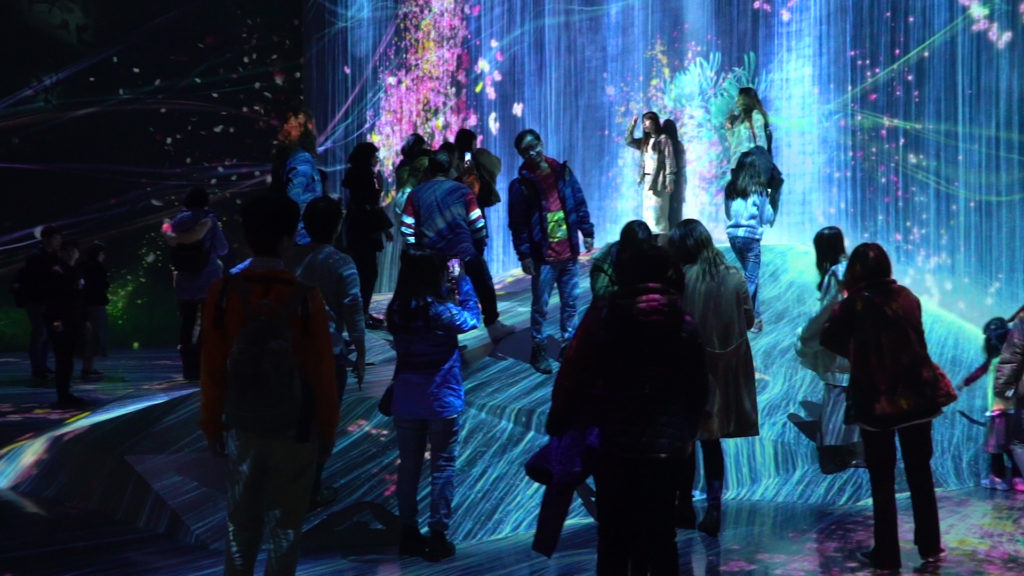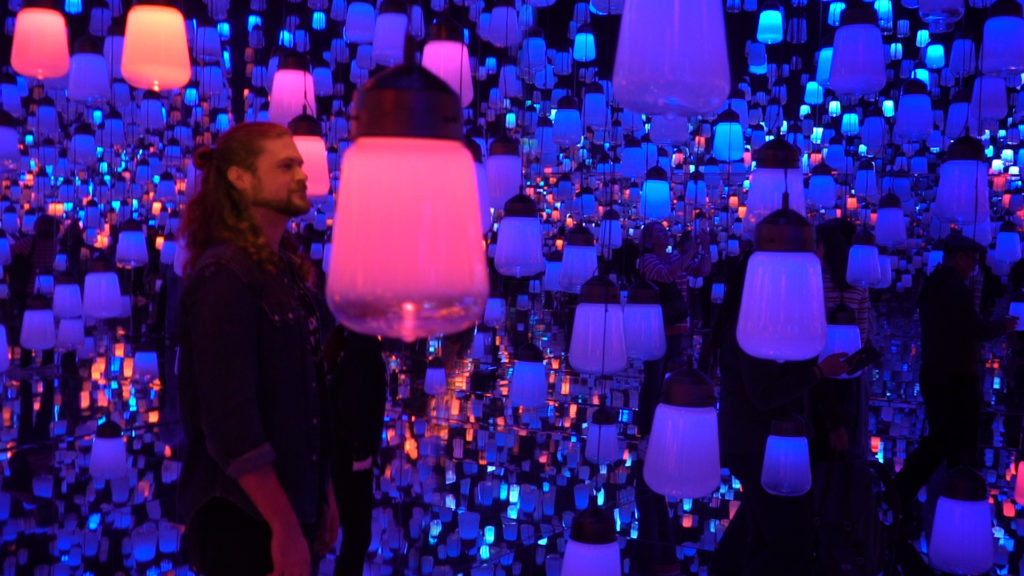Last month we visited teamLab Borderless in Tokyo, and as you’d expect, we were amazed by what we saw.
It’s difficult to offer a simple description of teamLab; the Tokyo-based interdisciplinary group of ‘ultra-technologists’—artists, programmers, engineers, animators, mathematicians, and architects—produce art that isn’t easily defined. Their flagship location, The MORI Building DIGITAL ART MUSEUM: teamLab Borderless (henceforth just, “Borderless”), is a two-story, 33,000 sq. ft, immersive and interactive museum. Put simply: it’s part sci-fi fine art, part sensory amusement park.
As the name implies, the space isn’t meant to be experienced in a traditional or linear way—visitors are never offered a map. The point is to flow freely from space to space at your own speed. Though the primary technology deployed in Borderless is light and projection mapping, many of the concepts we witnessed during our visit while covering the 2019 NEWVIEW Awards speak directly to the future of XR.

When you first enter Borderless, you’re greeted with a series of nearly pitch-black halls that serve as a palette reset from the outside world. Opening a tall black curtain reveals a labyrinthine space covered in every direction by vibrantly projected flowers. What at first glance may appear to be doorways turn out to be mirrors, and vice versa, giving you the immediate sense that not only are you no longer in Kansas, but you are no longer on the normative plane of reality—your senses can’t quite be trusted here. Touch the wall where a beautiful projected flower floats gracefully in an abyss and it slowly poofs into petals—wilted and gone, to be reborn again from a blooming bud. Tap a butterfly and it dies, spawning a new one somewhere else in the room.
This cycle of life manifests throughout the entire museum, most visibly through the recurring exploration of seasons and seasonal change, which teamLab Borderless Museum Chief Ou Sugiyama explains is very important in Japanese culture. The motif is an enriching detail, there for you to discover and contemplate if you so choose but just as easily overlooked without the rebuke of a ruined experience. No signs on the wall tell you how to interact with or think about what you see.
“The idea of this building is to be ‘borderless,'” Sugiyama said in an interview with VRScout. “No borders between you and me, between objects and the real world—that’s the feeling we want people to leave here with.”

This idea plays out again in the infinity room, which is filled with large hanging lamps that illuminate when you get near them and change their entire color scheme to mimic the passage of time. You later enter another, far larger infinity room where floor to ceiling LED strands synchronize in a mesmerizing fractal light display all around you; at one moment a flock of birds or impressionistic wind, and the next simulated rain (which, thanks to the mirrored floor, pours down and up at the same time).
“We are living in a very material world, value is found in the material,” Sugiyama said. “But there is value in the digital world as well. We wanted to set people free from the material, and that’s the inspiration behind Borderless.”
The exhibition is divided into five sections: Borderless World, Athletics Forest, Future Park, Forest of Lamps, and the En Tea house. It’s difficult to determine how many individual exhibits are on display because, as the “Borderless” moniker implies, there is quite a bit of overlap. In teamLab’s own words: “We see no boundary between humans and nature. Everything exists in a long, fragile yet miraculous, borderless continuity of life.”

And Sugiyama believes that this notion of borderlessness could someday be part of the fiber of daily life—in Tokyo and beyond.
“In the future, we want to ‘hack’ the entire city with digital art,” Sugiyama said. “Projection mapping, but also with new devices. We’re waiting for new AR devices with high hopes because once there is mass adoption, there will be yet another way to create [borderless] art.”
This gets to the heart of why the Borderless exhibition is so vital to the immersive landscape right now. We too are awaiting new devices with high hopes. Even the most ardent optimist, however, would give a conservative estimate on the eventual “mass adoption” date—it’s going to be a while. Borderless gives us a glimpse of some of the ways we might one day interact in our daily lives.
It also reminds us that not all the best immersive media will come from the bleeding edge of technology. The visuals at Borderless are primarily accomplished with projection mapping, LEDs, and mirrors—tech that’s been around for quite a while. It’s the way these elements are synchronized and the sheer scale at which they are employed that brought 2.3 million visitors to Borderless in its first year (it first opened in summer 2018).
By creating a thriving cultural and economic immersive institution, teamLab is not only enabling itself to iterate in a real-world immersive environment, discovering principles the digital world will someday share in common; it is kickstarting visitors’ imagination for what a daily life suffuse with XR might feel like, when the technology becomes an afterthought.
Feature Image Credit: Dave Dorsey, Jesse Damiani
The post The Shared VR Of Tokyo’s TeamLab Borderless Offers A Glimpse Of An XR Future appeared first on VRScout.
from VRScout https://ift.tt/2TBCkWl
via IFTTT
No comments:
Post a Comment